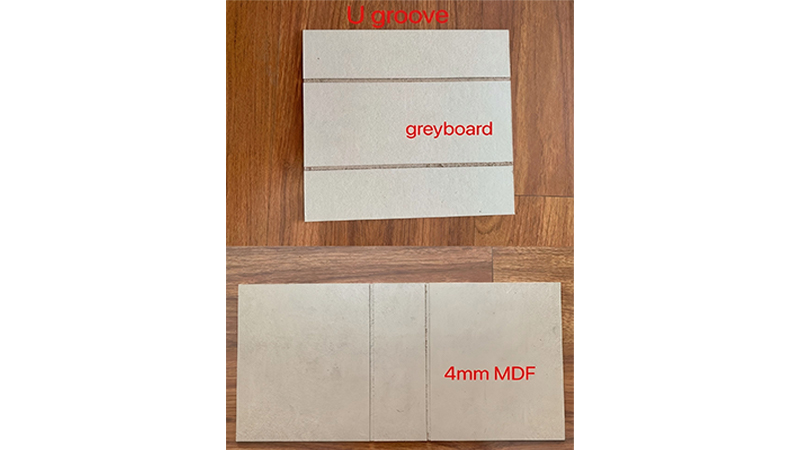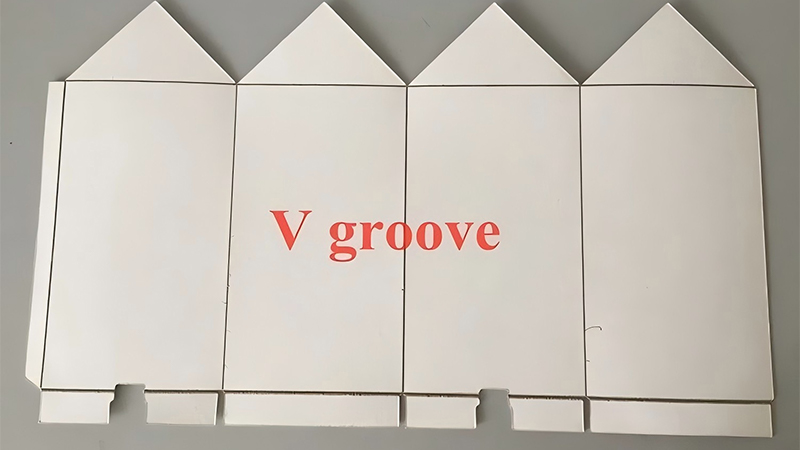-
 Since 1996Professional Cardboard Grooving
Since 1996Professional Cardboard Grooving
Machine Manufacturer - Home
- About
- Product
- Service
- Innovations
- Case
- News
- Contact us
-
- EN
Grooving is an essential process in a wide range of industries, including woodworking, metalworking, and plastics manufacturing. It involves cutting a narrow slot or groove into a material to achieve a specific functional or aesthetic effect. Two common types of grooves are U-grooves and V-grooves, each with its own unique characteristics and uses.
Understanding the difference between these two types of grooves is essential to choosing the right groover (whether it is a V-groove or another specialized tool) to achieve the desired results. This article explores the key differences, benefits, and best use cases for U-grooves and V-grooves.
A U-groove is a groove with a rounded U-shaped profile. They are typically made using a router, planer, or groover designed for smooth, curved cuts.
U-groove features:
Shape: semicircular or round bottom
Tools used: ball end mill or U-groove milling cutter
Edge finish: smooth, no sharp corners
Common applications: decorative edges, fluid channels, O-ring seats and stress relief grooves

U-groove advantages:
Reduces stress concentration: the round bottom design minimizes stress points and is ideal for high stress applications.
V-grooves have a V-shaped profile and are usually cut at a specific angle, usually 60° or 90°. These grooves can be made using a V-groove machine or a tool with a bevel milling cutter.
V-groove features:
Shape: Sharp beveled edges that meet at one point
Tools: V-shaped milling cutter or dedicated V-groove machine
Edge finish: Crisp, sharp edges
Common applications: Engraving, sign making, panel joining, and deburring

V-groove benefits:
Precision cutting: Great for fine engraving and sharp edges.
Strong joints: Used for welding and panel joining for better bonding.
Versatility: Suitable for both functional and decorative uses.
| Features | U-groove | V-groove |
| Shape | Rounded bottom | Sloped, sharp bottom |
| Tools | Ball-end milling cutter | V-shaped milling cutter |
| Stress distribution | More conducive to stress reduction | More prone to stress concentration |
| Application | Seals, fluid channels, decorative edges | Engraving, welding, sharp details |
| Edge treatment | Smooth, rounded | Sharp, angled |
For U-groove; Common packaging applications:
Folding cartons – Reduce bending stress and prevent cracking of thick cardboard.
Corrugated boxes – Helps to form clean, durable folds and improves stacking strength.
Flexible packaging – For plastic or laminate films that are easy to fold without weakening the material.
For V-grooves; Common packaging applications:
Rigid cartons (e.g., luxury packaging) – provide crisp, precise folds for high-end displays.
Die-cut displays – ensure clean folds for POP (point-of-sale) displays.
Paperboard and particleboard – help create strong, crisp creases.
When choosing between the two, consider factors such as material type, groove depth, and intended use.
U-grooves and V-grooves each have their own unique uses in machining and manufacturing. U-grooves have a smooth, compression-resistant profile, ideal for sealing and aesthetics; while V-grooves have sharp, precise cuts, ideal for engraving and strong seams.
As the world's largest manufacturer of cardboard grooving machines, Saili has become a leader in the grooving industry with its innovative technology and diverse solutions. Saili knows that every business has unique needs, so we offer fully customizable production methods to ensure that our machines fully meet your production goals and specifications.
Do you need specific recommendations for V-grooving machines or U-grooving tools? Tell me your needs and our professional technicians will answer you online.